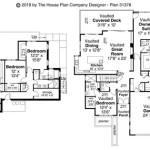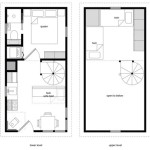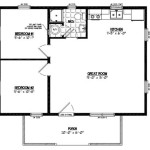How To Find Floor Plans For My Home
Locating existing floor plans for a home can be crucial for various reasons, ranging from planning renovations and understanding the home's structural integrity to simply satisfying curiosity about its original design. The process can involve several avenues, each with its own potential benefits and limitations. Successful navigation requires a strategic approach, considering the age of the property, local record-keeping practices, and the nature of any modifications made over time.
The availability of floor plans greatly depends on several factors. Newer homes, especially those built within planned communities, are more likely to have readily accessible plans. Older homes, particularly those pre-dating widespread digital recordkeeping, may require more extensive research and ingenuity to uncover their original blueprints. Moreover, any significant alterations or additions to the property could mean that the existing structure deviates considerably from the original plans, necessitating careful verification and potential redrafting.
Exploring Official Channels: Local Government Archives and Building Departments
One of the most reliable sources for obtaining floor plans is the local government. City halls, county courthouses, and building departments often maintain archives of building permits and associated documentation, including architectural drawings and floor plans. The accessibility of these records can vary depending on the locality. Some jurisdictions have transitioned to digital record management systems, allowing for online searches and downloads. Others may require in-person visits to physically search through archived documents.
When visiting a local government archive, it is essential to have as much information as possible about the property. This includes the exact address, the year the house was built, and the name of the original builder or developer, if known. This information will significantly speed up the search process. It is also advisable to contact the relevant department in advance to inquire about their procedures for accessing records and any associated fees. In some cases, a small fee may be required to obtain copies of the floor plans.
It is important to note that building departments may not hold plans for all properties. Plans are typically required for new constructions, significant renovations, or additions that require permits. Minor alterations that did not necessitate a permit might not be documented. Moreover, some jurisdictions have retention policies that dictate how long building plans are kept on file. Older plans may have been discarded due to space constraints or policy changes. Before embarking on a visit to a government archive, it is prudent to check their record retention policies online or by contacting the department directly.
Even if the original plans are not available, the building department might have other relevant documentation, such as site plans or surveys. These documents can provide valuable information about the layout of the property and the location of utilities, which can be helpful in understanding the overall structure of the home. Furthermore, any records of past permits can shed light on any alterations or additions that have been made to the property over the years.
Contacting Developers, Architects, and Previous Owners
If local government archives prove unfruitful, consider reaching out to the original developer or architect of the home, if their information is available. For homes built in planned communities or subdivisions, the developer may still have records of the original floor plans. Similarly, if the home was custom-built, the architect who designed it might retain copies of the architectural drawings. Contacting these professionals could be a direct route to accessing the desired plans.
Finding the developer or architect can sometimes be challenging, especially for older homes. Local historical societies or real estate records may provide clues. Online searches using the property address and the year it was built can also lead to relevant information. If the original developer is no longer in business, it may be possible to trace their successors or associated companies. Architectural firms often keep records of their past projects, even if the original architect has retired or moved on.
Another potential avenue is to contact previous owners of the property. They may have obtained copies of the floor plans during their ownership, either from the original builder or during a renovation project. Real estate agents involved in previous sales of the property may also have access to historical documentation, including floor plans. While there is no guarantee that previous owners will have the plans or be willing to share them, it is worth exploring as a possible source.
When contacting developers, architects, or previous owners, it is essential to be polite and respectful of their time. Clearly explain the reason for your request and emphasize that you are seeking information about the property for legitimate purposes, such as planning renovations or understanding its history. Offering to cover any costs associated with retrieving or copying the plans can also increase the likelihood of a positive response.
Utilizing Online Resources and Professional Services
The internet offers a variety of resources that can assist in finding floor plans. Online real estate databases, such as Zillow, Redfin, and Realtor.com, sometimes include floor plans as part of the property listing. While these plans may not always be available or accurate, they can provide a general idea of the layout of the home. Moreover, online collections of historical maps and architectural drawings may contain information about the property's original design.
Specialized websites and online communities dedicated to architecture and home design can also be valuable resources. These platforms often feature user-submitted floor plans and architectural drawings, as well as discussions and forums where individuals can seek assistance in locating specific plans. Searching for the property address or the style of the home on these sites can sometimes yield results. However, it is crucial to verify the accuracy and authenticity of any plans obtained from online sources.
If all other avenues fail, consider hiring a professional to recreate the floor plans. Architects, drafters, and home measurement specialists can accurately measure and document the existing structure of the home, creating a detailed floor plan that reflects its current layout. This can be particularly useful for older homes or properties that have undergone significant renovations. While this option involves a financial investment, it ensures that the resulting floor plan is accurate and reliable.
When hiring a professional to recreate floor plans, it is essential to choose someone with experience and expertise in residential architecture and documentation. Obtain multiple quotes and compare their qualifications, fees, and turnaround times. Ask for references and review their portfolio to assess the quality of their work. A reputable professional will be able to accurately measure the property, document its features, and create a detailed floor plan that meets your specific needs.
Recreating floor plans involves careful measurement of all rooms and spaces within the home, including the location of walls, doors, windows, and fixtures. The professional will also document the dimensions of the exterior walls and the overall footprint of the property. This information is then used to create a digital drawing of the floor plan, which can be provided in various formats, such as PDF, DWG, or CAD. The resulting floor plan can be used for planning renovations, obtaining permits, or simply understanding the layout of the home.
In conclusion, locating floor plans for a home can be a multifaceted endeavor, requiring persistence and a strategic approach. By exploring official channels, contacting relevant professionals and past owners, and utilizing online resources, it is often possible to uncover the desired plans or create accurate reproductions. The availability of floor plans depends on several factors, including the age of the property, local record-keeping practices, and any modifications made over time. Understanding these factors and employing a systematic approach can significantly increase the chances of success.

Where You Can Buy House Plans Live Home 3d

House Plans How To Design Your Home Plan

House Plans How To Design Your Home Plan

How To Get Blueprints Of Your House

House Plans How To Design Your Home Plan

House Plans How To Design Your Home Plan

House Plans How To Design Your Home Plan

How To Read A Floor Plan With Dimensions Houseplans Blog Com

House Plans How To Design Your Home Plan

House Plans How To Design Your Home Plan
Related Posts








